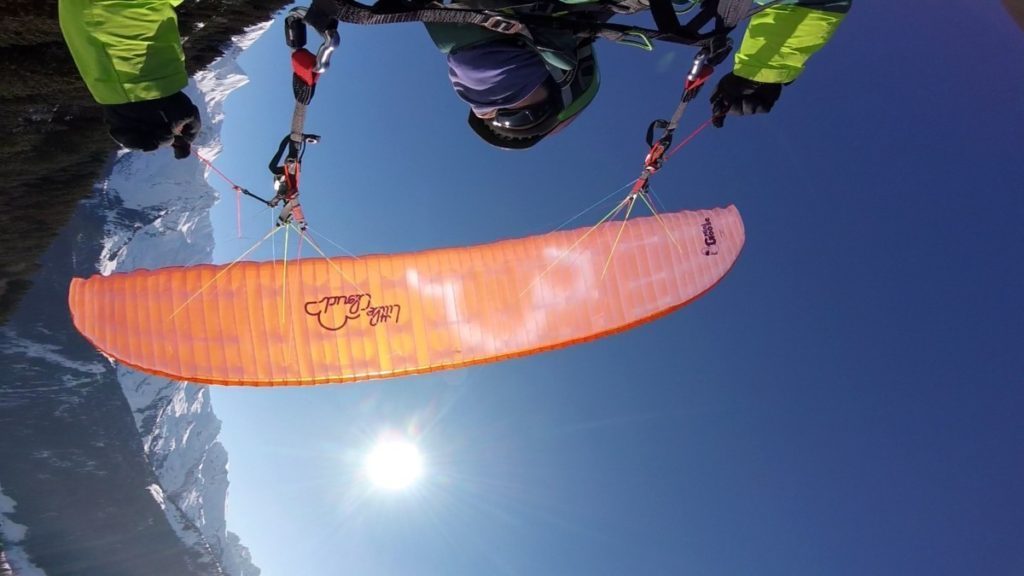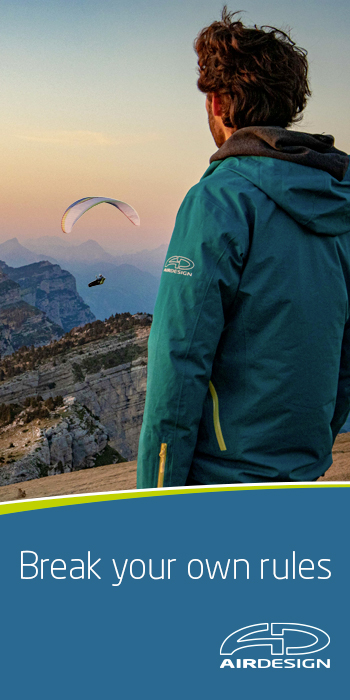
Little Cloud Mini & BabyGoose reviewed by Above The Pines
A range mainly intended for soaring by sustained wind to very strong
Design
The risers are, like all those in the LC range (Little Cloud), of good quality and finish. They are equipped with trims and accelerators, which is very practical for soaring, whether laminar or turbulent.
A press stud, standard at LC, allows you to connect the risers to each other during storage, facilitating untangling and allowing you to connect the wing to the pilot in strong winds without any riser twist, even before you unfold the wing.
You will notice the presence of a ears kit as on paragliders. Even if it sounds crazy or ridiculous, if the wind blows so hard that you want to go down and land, you’ll probably be happy to be able to do the ears.
The lines are sheathed in the lower part, unsheathed and dyneema on the upper part.
It will be necessary to take care of your detangling so as not to take off with a knot. On a 10.5m2 wing, this could have serious consequences.
However, the line configuration is quite simple, as it’s often the case with LC, and untangling is simple and easy.
The tissue is the unavoidable Dokdo high quality fabric, which has proven itself in the brand since its inception.
The profile is very arched, and the wing attracts the eye like a UFO in the sky.
This very curved shape allows you to maintain a very moderate rate of fall in turns, and therefore good performance, whether you lack a few km/h of wind, whether you fly on a small relief where the slightest dive will take you to the ground, or to exploit a thermal under the amazed eyes of paragliders.
The aspect ratio of 5.3 and the 61 cells are impressive! Spread on a take off among other sails, we barely notice the small size of the wing.
We really feel like we have a cross-country wing, but 10 m²…
The weight is, as often with LC, very honorable, creating a good weight/robust compromise. But the large number of cells obviously requires more tissue, therefore more weight and a larger folded volume than a Spiruline EZ for example.
Behavior
The Mini and Baby behave quite similarly, even if the Mini is obviously more accessible than the Baby.
In strong wind, the wing is made to avoid rising without pulling the A risers, which is very reassuring and securing. A smooth action on the A risers and it goes up well, without exceed too much. Do not restrain the rising too much on the brakes, and let it come to the zenith before braking.
Without wind, the wing will have to be assisted by the front risers to help its rising. As it is recommended on LC’s wings, the hands at 10h10 locked at the shoulders allow a clean and efficient rising. It is also preferable to spread the wing in an arc of circle to allow it to inflate from the center to the extremities.
The take off is very good and very fast, it requires of course a speeding without shyness but even the Baby takes off very quickly for its 10.5 m².
The glide is incredible, the wing flies like a paraglider with an impressive speed.
It reacts immediately to the aerology and goes up in the slightest thermal by transmitting well, nervously but without amplitude. With a good experience in thermal conditions and a good contol of this glider, you can hope to have fun during flights on sites in well established thermal conditions (for very confirmed pilots of course!).



